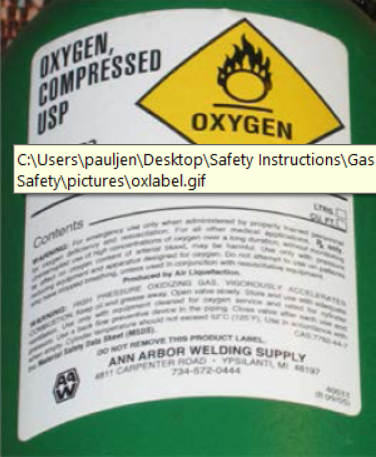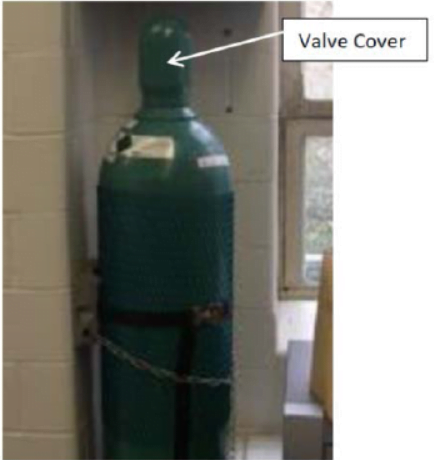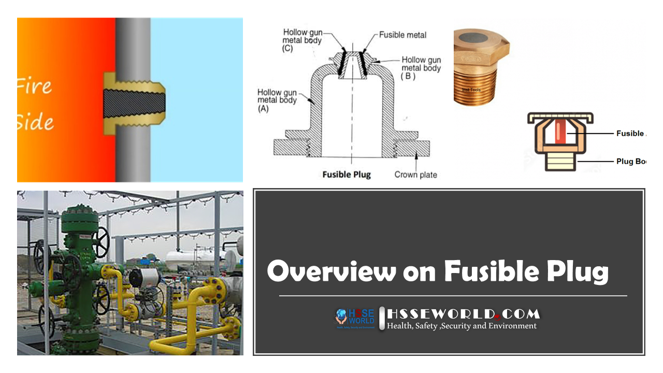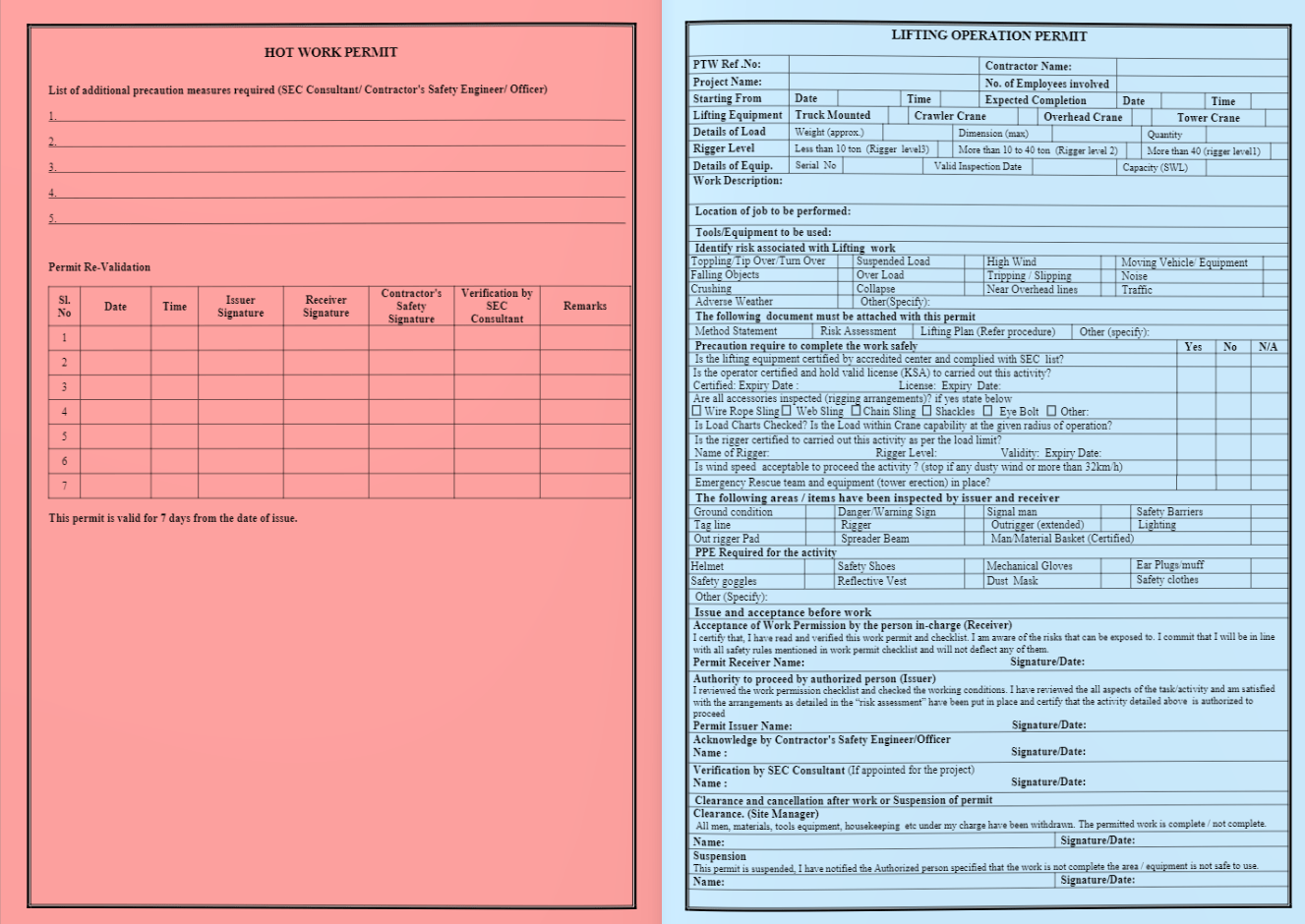Some general information about Gas cylinders safety
- Review MSDSs/SDSs and read all labels before handling, storing, or using compressed gases. If you do not know what is in the cylinder, do not use it.
- Always use compatible hookups, tubing, regulators, valves, and protective caps.
- Compressed air should not be used for cleaning purposes without appropriate reduction of valves (30 psi maximum).
- All employees using a compressed gas cylinder must be properly trained in the safe use, handling, and storage of the cylinder.
- Never discard any of the safety plugs or caps.
- Lecture-sized bottles contain specific storage requirements and hazards.
You Can Read the Compressed Gas cylinders Safety Posters by flipping the file below
Also Read: Compressed Gas Cylinders Access Control Inspection Checklist
Potential Hazards/Precautions
- Chemical Hazards: Gases can be toxic, flammable, oxidizing, corrosive, or inert.
- Gases such as nitrogen or helium can displace air creating an oxygen-deficient atmosphere.
- Toxic gases (e.g. carbon monoxide, ammonia) can create poisonous atmospheres.
- Flammable, oxidizing, or reactive gases (e.g. acetylene) can result in a fire and exploding cylinders.
- Physical Hazards: Physical hazards are in response to high pressures inside gas cylinders.
- Damage from falling, heat, electrical circuits, motion, vibration, or anything that can cause a weakness or crack in the cylinder wall or shell can cause a cylinder to rupture, explode, or act as an uncontrolled rocket.
- Cryogenic liquids pose specific physical hazards such as frostbite and other extreme cold temperature hazards,
Labeling Requirements

- Prior to use, ensure all cylinders are clearly labeled to identify their contents or lack thereof (e.g. empty).
- If the labeling on the gas cylinder becomes unclear or defaced so that the contents cannot be identified, the cylinder should be marked “contents unknown” and the manufacturer must be contacted regarding appropriate procedures for removal.
- Any gas lines leading from a compressed gas supply must be clearly labeled.
- Do not rely on color coding as a means of identification; cylinder colors vary from supplier to supplier.
- Labels on caps have no value because caps could be interchangeable.
Also, Read Photo of the day: Read All Labels Work safely
Safe Handling & Use
- Use compressed gases only in areas with adequate ventilation.
- Never intentionally drop or strike compressed gas cylinders against one another.
- Do not use compressed gas in a confined space.
- Never use a leaking, corroded, or damaged cylinder. Remove the cylinder from service and contact the supplier for a return.
- Keep cylinder valves closed except when the cylinder is being used. When opening a cylinder valve, stand so that the valve outlet is pointed away from yourself and all other employees. Open valves slowly.
- Use only regulators, pressure relief devices, valves, hoses, and other auxiliary equipment that is designed for the specific container and compressed gas to be used.
- A minimum of 20 feet must be maintained between oxidizers and flammable gases and other combustible materials, such as oil or grease. A firewall (partition) 5 feet high with a half-hour rating can be substituted.
Personal Protective Equipment (PPE)
- Eye protection must always be worn when handling and working with compressed gases. In some cases, additional protection may be needed in the form of a face shield.
- Use foot protection when moving or transporting cylinders
- Use gloves and protective clothing to protect against frostbite (for cryogenic liquids), corrosives, and pinch points.
- If respirators are required for use with compressed gases (i.e. Atmosphere-supplying respirators for asphyxiant gases), follow the Respiratory Protection Program to be eligible to wear a respirator.
Inspecting a Cylinder
- Visually inspect compressed gas cylinders upon delivery and on a routine base; inspect for exterior corrosion, denting, bulging, gouges or digs. Leaking cylinders, cylinder valves, or other equipment should be moved to a safe, isolated area and taken out of service.
- All damaged or questionable cylinders or equipment should be returned to the supplier for correction or replacement.
- Shut a leaking valve and tighten the valve glad or nut. If it still leaks, closes it, remove the cylinder to a well-ventilated area, and post a warning of the hazard rendering it unserviceable.
Transportation
- Do not move cylinders if you cannot do so with ease; do not roll, drop or let cylinders bump violently against one another.
- Compressed gas cylinders must be transported with protective/safety caps in place
- Avoid dragging or sliding cylinders. Do not lift cylinders by the caps. Firmly secure the cylinder and move with a suitable hand truck, lift truck, or crane with a cradle or platform. Do not use lifting magnets; slings, ropes, or chains are
- acceptable if the cylinder is equipped by the manufacturer with lifting attachments.
Cylinder Storage

- All compressed gas cylinders (whether empty or full and regardless of size) need to be individually secured upright to racks, walls, work benches, or hand trucks by a strong chain or strap, or secured by any other approved method capable of preventing the cylinder from falling or being knocked over due to accidental contact, vibration, or earthquakes.
- The chain or strap should be near the top 1/3 of the cylinder but below the cylinder’s shoulder.
- As a best practice, OSU EH&S recommends using a second chain on the bottom 1/3 of the cylinder to prevent the cylinder from sliding out of the upper chain.
- When a cylinder is in storage, ensure the steel valve protection caps are on.
- Do not expose cylinders to corrosive or combustible materials.
- Group and store compressed gases based on their hazard class.
- Compressed gas cylinder storage areas must be located away from emergency exits and must be kept in a well-ventilated room protected from the weather.
- Prevent indoor or outdoor temperatures from exceeding 125°F (52°C) for all cylinder storage areas.
- Store flammable cylinders in a well-ventilated area away from oxidizers, open flames, sparks, and other sources of heat or ignition.
- Store full and empty cylinders separately.
Empty Cylinders
- When empty, close and return cylinders. Empty cylinders must be marked as “EMPTY”.
- Replace protective caps and close all valves before returning empty cylinders to the supplier.
- Empty cylinders have residual pressure and should always be handled as full.
- Handle empty cylinders with the same case as full cylinders.
Hydrostatic Testing
- All cylinders require periodic hydrostatic testing as required by the Department of Transportation (DOT). During the hydrostatic testing, the cylinder is examined to ensure it can safely hold its rated pressure. Cylinder owners must set up this testing prior to refilling the cylinder, whereas rented cylinders will be tested by their owner prior to refill.
- The frequency of the testing depends upon the cylinder material:
- Aluminum –every 5 years
- Steel –every 5 years
Download the Posters
Compressed Gas cylinders Safety Posters
Download Powerpoint
Also Read: Books: OSHA-Permit Required Confined Spaces




